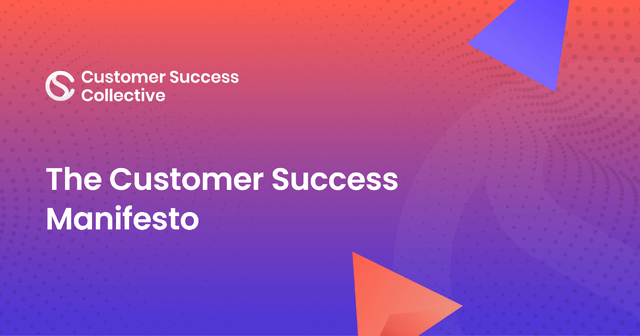Working with a client on a call is the main way for customer success managers (CSMs) to uncover value from their product or service and, as a result, maintain a high level of gross and net retention. On-site meetings also happen now and then, but the COVID-19 pandemic has made online interaction even more common than it used to be.
CSMs are not magicians and cannot always guarantee that the customer’s expectations for the product are met or exceeded (for example, when the product is simply a bad fit). However, the result of the interaction with the CSM is usually a more satisfied client whose business challenges have been addressed.
For that to happen, a call with a CSM needs to take place. Unfortunately, getting clients on a call is one of the key challenges CSMs face regularly.
Today we will discuss six common reasons why customers do not want to speak with their CSMs and what to do about it. 👇
1. The essence of the role of a CSM is unclear
As more and more companies make the transition from a proprietary business model to a subscription-based one, the role of customer success manager is becoming more common. It’s still new compared to more ‘classic’ and well-known client-facing roles like sales representatives, account managers (AMs), or support agents.
So when CSMs reach out to customers, they often get confused since they don’t understand what the role implies. You often hear phrases such as, “I thought I already had a dedicated sales rep” or, “Is this about the marketing survey I got from you earlier?” The client thinks these calls are a waste of time and ignores the emails or declines the offer to have a meeting.
To avoid this confusion, it’s critical that CSMs and AMs plan client communication together. It’s good practice for the account manager to introduce a customer success manager and elaborate on the role and the support the client can expect from a CSM. Positioning the role in the CSM’s intro email also helps.
It might also be a good idea to send an email titled ‘Introducing your account team’, where all the customer-facing employees are positioned and their respective scopes of work are presented.
For example, you can highlight that for all commercial questions, the client is welcome to reach out to the account manager. The customer success manager provides strategic guidance on achieving the goals the client has set for the product and ensures ROI on it.
Meanwhile, the support team addresses the technical issues. Given that the team may change over time, it wouldn’t hurt to re-send these emails once a year or even more frequently.

2. The client is concerned that CSM will start selling upgrades
The lack of understanding of the role of customer success managers may lead to a false assumption that they will sell something during the call. To address this concern, the role of the CSM has to be positioned properly.
Sometimes this means communicating to the client directly that selling isn’t something that falls into the CSM’s area of responsibility. Should the customer want to upgrade their subscription, the CSM would connect them to their Account Manager.
When handling customers’ objections on this matter, it would be a good idea to highlight (either in writing or when calling the customer directly) that the first step is always making the most of their current subscription type to increase the value without increasing spending.
It’s critical that CSMs demonstrate consistency in that commitment. They need to be prepared to demonstrate the product’s basic solutions and suggest workarounds wherever applicable.
For example, some of Wrike’s customers purchase our product as a CRM. While we have many successful CRM use cases, Wrike does not have the whole set of CRM features and solutions that Salesforce has to offer.
To set the right expectations, we communicate to customers that while we would be happy to assist in building a CRM in Wrike, it would involve workarounds in several areas where our product isn’t tailored to these needs.
If CSMs are incentivized to push through subscription upgrades, they need to start with solutions already available on the client’s subscription to win their trust. Once these solutions have been provided, it would then be fine to communicate (wherever applicable) that higher subscription tiers or add-ons offer a better way to address their challenges.

3. Excessive communication from the company
It’s often the case that many departments in the organization are sending emails to the customers to try to engage them in other ways. While everyone has their agenda and goals to achieve, this can lead to customers being overwhelmed by communication.
When communication efforts by different teams aren’t coordinated and consolidated, it can become a true nightmare for the customer. Remember, your solution may not be the only product the client is using. Try to imagine the total amount of messages they receive. As a result, many customers may choose to unsubscribe from all communication. According to laws such as GDPR, this means that it would not be legal to continue engaging the client.
As a first step, I strongly recommend reviewing all communication sent to the customer by various teams and departments to create a unified and consolidated strategy.
Secondly, ask team members who are already in touch with the client to introduce members of other teams on calls or via email instead of reaching out to the client themselves. For example, if a UX research team needs to conduct a product interview with the client, it’s a better idea to leverage an AM or a CSM who has built a relationship with a client than to send a regular intro email.
Thirdly, create an opportunity for customers to choose which type of communication they would like to receive. For example, give them the option to unsubscribe from marketing emails and only receive communication from the account team.
Finally, after a successful call with an AM or CSM where value was clearly delivered for the customer, ask them to re-subscribe to communication so the account team can reach out. Demonstrate flexibility on this front if the client asks for communication once per quarter or twice a year instead of bi-monthly emails.
4. The client had a negative previous experience with a CSM
Another scenario that may leave a customer reluctant to have a call with a CSM is a previous negative experience with a customer success manager, either from your company or another vendor.
This could have happened due to the CSM’s lack of training, a lack of empathy, false expectations on the client’s side, or many other reasons. Sometimes, it can be as simple as misalignment on a personal level. Regardless of the reason, such an experience may linger in the customer’s mind and, as a result, the call offer is declined repeatedly.
Being pushy about getting the client to attend a meeting would not be a good approach here. Instead, customer success managers need to be ready to jump in whenever any help is required from the client’s side.
Again, it’s a good idea to collaborate with other teams already having an open conversation with the customer – sales, support, renewals, billing, or any other customer-facing team. They can loop the CSM into the discussion, and as long as they do a good job addressing the client’s needs, trust will be earned over time.
5. No proper champion on the clients’ side to drive the rollout or adoption
Organizational commitment to adopting a new solution involves having a person drive the change in the organization, help team members learn how to use the solution, adapt the processes, and remind the employees to follow them.
Sometimes, the executive decision is made to purchase a specific solution, but there’s no buy-in from anyone from senior management and no one to be the solution evangelist. Everyone says they’re busy and don’t have the time to study the tool themselves and facilitate the team’s onboarding and adoption. As a result, CSMs are unsuccessfully reaching out to various stakeholders and getting the same answer: “I’m not responsible for that.”
The same thing can happen when there was once a great champion in the organization, but they’ve left and no one else has stepped into their shoes. The only solution here is to arrange a meeting with the decision-maker – usually a C-level or VP-level executive.
Clearly and honestly present the situation by saying: “Your company has already spent X amount on our solution. My goal is to maximize the ROI on your spending. For that to happen, we need a senior manager from your side to drive the change. Could you please tell me who would be the best person I could reach out to on this?”
This approach is usually pretty effective since senior management is committed to ensuring company money is well spent. They have the authority to start the wheel turning.

6. The customer considers themselves a product expert
Occasionally, customers self-onboard without the help of a CSM. This could happen for different reasons – from unresponsiveness to the initial outreach to not meeting the criteria to get a dedicated customer success manager. In any case, clients develop their own practices for using the product.
Sometimes, these practices are very effective and similar to what the CSM would recommend. In other scenarios, there may be fundamental flaws in product usage that significantly diminish the value received from it. However, the client may not be aware of those flaws and could be 100% confident that they’re doing things right and don’t need any help. In other words, they don’t know what they don’t know.
Getting such customers on a call is usually less challenging than getting them to change their ways of doing things. The reason for their resistance is completely different from the five described above. In our experience, the word ‘new’ is one of the most attractive ways to get them into a meeting. New releases, new best practices, new success stories – all new.
When CSMs manage to attract customers with compelling messaging, their job has only just begun. They often need to spend quite some time driving changes in product usage.
Getting customers on a call is only the first step in the long and challenging process of helping them to get the most out of their investment in the product. But without it, everything else – the CSM’s expertise, market and industry knowledge, the product use case – doesn’t matter.

If you liked this article and fancy learning more about the do's and don'ts of customer success, you should have a snoop at our templates & frameworks, which are included in our membership plans.



 Follow us on LinkedIn
Follow us on LinkedIn



